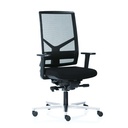ABOUT HERNIATED DISCS
A herniated disc or ‘slipped disc’, as it is more familiarly connoted, predominantly presents with varying degrees of pain which could radiate to the lower back, buttocks or even the lower leg. A common cause of herniated disc problems is improper lifting, poor posture or repetitive activities. Thus it is more than evident that the preferred line of prevention is adopting innovative ergonomic practices. On the contrary to popular those diagnosed with a herniated disc do not invariably need to undergo back surgery for herniated disc.
SURGERY REDEFINED
50 percent of all cases do not require back surgery for herniated disc as they recover within a month of occurrence. On the contrary 96% recover within 6 months with a mere 10% needing back surgery for herniated discs.
The primary indication of back surgery for herniated disc depends on the symptoms which could range from persistent leg pain and limitations of movements around the joint through to loss of sensitivity in the affected part.
SURGICAL OPTIONS
When surgery is being considered the advantages are evidently return of movement and alleviation of pain. Nevertheless when it comes to treatment for a herniated disc, non-surgical modalities can fail and it is in instances such as these where one may opt for back surgery for herniated disc:
LAMINECTOMY
The name is suggestive considering the fact that laminectomy is a specific type of back surgery for herniated disc where the thin layer of vertebral bone is removed and thus decompression of the spinal cord occurs. Concurrently the spinal canal may be narrowed due to the growth of thickened tissue within the lumen of the tube. Thus the symptoms of a herniated disc like pain and tingling are best controlled by removing the bone in the region and clearing out the tissue within the spinal canal lumen.
DISCECTOMY
Discectomy is a surgical option wherein the herniated material is removed and the compression or pressure symptoms over the spinal cord are minimized thus eradicating pain. Pain is one of the symptoms of a herniated disc which could incapacitate or even disturb the quality of life of an individual.
HERNIATED DISC – THE PREVENTION
The recent advances in technology have led to most of the time being spent on sitting or travelling. Statistics indicate that one of the commonest causes of herniated disc lower back is poor posture. When it comes to correcting the posture, ergonomics is known to help improve body posture in most instances, thus minimising the probability of contracting a herniated disc.
While sitting in office, keep both the feet flat on the floor and bend the knees at ninety degrees, thus minimizing the stress on the lower back. Alternatively when driving keeping both the feet flat on the floor and using the cruise control option may well protect one from contracting a herniated disc in the future.
Travelling light by using the right type of baggage which is both compact as well as easy to roll can help prevent the risk of herniated disc in the future.
Finally herniated discs are simple to diagnose considering that the symptoms are typical and most importantly, the condition is preventable provided proper ergonomic control mechanics are implemented.
PICKING THE BEST CHAIR FOR HERNIATED DISCS
Picking the best chair is one of the most important decisions for an individual with a herniated disc and works in a sit down environment like an office can make. The key things to ensure are:
- The size is right– One size does not fit all! The chair should be the correct size for you whether your large, small or in between. Adjustability is key. All features must be adjustable enough to support you in the neutral position. Armrests should be adjustable in height,width and depth. There must be a seat pan depth adjustment and seat height adjustment. If the chair is the too big or small, even with the best chair it will not be suitable for you.
- Lumbar support - The chair must provide excellent lumbar support that is adjustable in height to ensure full support of the back and ideally include a lumbar pump to get the exact match for your spine.
- Encourage natural movement – Ensuring the user works while varying sitting positions with ease and maintaining good posture is the most important element of the chair. The movement needs to be adjustable to the size of the user and ensure they are always correctly supported. Otherwise the movement is too loose or stiff which makes it useless.















